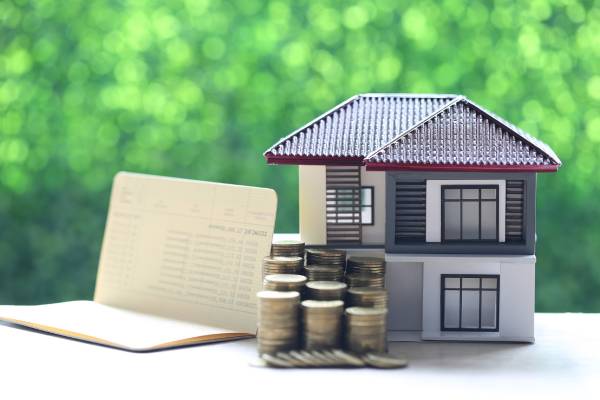From Starter Home to Dream Home: A Toronto Homebuyer’s Guide
05/20/24

Transitioning from a starter home to your dream home is an exciting journey that requires patience, strategic planning, and an understanding of Toronto’s real estate market. A starter home, often a smaller and more affordable option, is an initial step into homeownership. Despite its limitations, your first home offers a unique opportunity to save money while building equity. As your financial situation improves and your equity grows, moving up to your dream home becomes more achievable. Here’s a comprehensive guide to help you make that transition smoothly with the expertise of the Smith Proulx Real Estate Team.
Understanding the Value of a Starter Home

Building Equity in Toronto: How Your Starter Home Contributes to Future Financial Stability
Owning a starter home in Toronto offers a unique opportunity to build equity, which can significantly contribute to your future financial stability. Equity is the difference between what you owe on your mortgage and your home’s current market value. As you make mortgage payments, your equity increases. Additionally, if the real estate market appreciates, the value of your home rises, further boosting your equity.
Toronto’s real estate market has shown steady appreciation over the years. Investing in a starter home now means you’re likely to see your property’s value grow. This increase in value can provide a solid financial foundation for purchasing your dream home later. When you’re ready to move, the equity you’ve built can be used as a larger down payment, reducing the amount you need to borrow and possibly securing better mortgage terms.
Learning Homeownership in a Dynamic Market: The Lessons and Experiences Gained from Owning a Starter Home in Toronto
Owning a starter home is not just a financial investment; it’s also an invaluable learning experience. Living in your own home teaches you about the responsibilities of homeownership, from routine maintenance to handling unexpected repairs. These experiences are crucial as they prepare you for managing a larger and possibly more complex dream home in the future.
Toronto’s dynamic real estate market provides a unique backdrop for learning. The city’s diverse neighbourhoods and competitive market conditions offer insights into what to look for in a home and how to navigate real estate transactions. You learn the importance of location, how to evaluate a property’s potential, and the nuances of negotiating offers.
Additionally, managing your own home helps you develop important life skills, such as budgeting for repairs and improvements, understanding mortgage terms, and dealing with contractors. These skills will be invaluable when you’re ready to upgrade to your dream home.
Defining Your Dream Home in Toronto

Starting the quest for your dream home means taking a good look at where you are now versus where you want to be. Life changes, like your family getting bigger or your job moving you to a new city, influence what you need in a home. Now’s the time to dream big and think about what your ideal home looks like. Here’s how to define your dream home in Toronto:
Assessing Your Current Situation and Future Needs
The first step in defining your dream home involves evaluating your current living situation and anticipating future changes. A growing family might necessitate more bedrooms or proximity to schools. A job change could influence the need for a home office or easier access to public transportation. Consider how your lifestyle might evolve over the next five to ten years and plan accordingly.
Identifying Non-Negotiables
Start by listing your non-negotiables—the features and attributes you absolutely cannot compromise on. This list might include:
- Number of Bedrooms: Essential for accommodating your family and guests.
- Location Preferences: Proximity to work, schools, access to TTC, or specific neighbourhoods.
- Amenities: A home office, a large backyard, or a spacious kitchen might be crucial depending on your lifestyle.
For example, if you love entertaining, an open-plan layout with a spacious kitchen might be essential. On the other hand, if you work from home, a quiet area might trump other considerations.
Dreaming Big: Desirable Features
While non-negotiables are must-haves, dreaming big involves thinking about desirable features that would make your home perfect. These might include:
- Luxury Features: A swimming pool, a home theatre, or a gym.
- Eco-Friendly Options: Solar panels, energy-efficient appliances, or sustainable building materials.
- Smart Home Technology: Automated lighting, security systems, and climate control.
Considering Toronto’s Unique Market
Toronto’s real estate market is dynamic and diverse, with each neighbourhood offering unique advantages. High Park offers green spaces and family-friendly amenities, while The Junction is known for its vibrant arts scene and eclectic shops. Bloor West Village combines the charm of a small village with the convenience of urban living.
Researching neighbourhoods can help you find the perfect balance between lifestyle preferences and practical needs. For market trends and data, use resources like the Toronto Regional Real Estate Board (TRREB).
Balancing Practicality and Dream
Balancing your dream features with practical considerations is crucial. While a home with every luxury might be appealing, it’s essential to stay within your budget. Prioritize your non-negotiables first, then see how many of your dream features fit within your price range.
Consulting with a real estate agent from the Smith Proulx Real Estate Team can provide personalized insights and help you navigate Toronto’s competitive market. They can offer expert advice on what’s feasible within your budget and help you find a home that meets your needs and aspirations.
Evaluating Your Financial Readiness

Before you start the process of purchasing your ideal home, it’s crucial to assess your financial health and prepare for the associated expenses. This step-by-step guide will help you evaluate your financial readiness and ensure you’re prepared for the investment.
1. Review Your Savings
Start by examining your current savings. A substantial down payment can reduce your mortgage amount and monthly payments. Aim to save at least 20% of the home’s purchase price to avoid private mortgage insurance (PMI) and get better loan terms.
- Emergency Fund: Ensure you have an emergency fund that covers 3-6 months of living expenses. This fund should remain untouched during the home-buying process.
- Down Payment Savings: Open a dedicated savings account for your down payment. Automate monthly transfers to this account to grow your savings consistently.
2. Check Your Credit Score
Your credit score significantly impacts your mortgage approval and interest rates. In Canada, credit scores range from 300 to 900, with scores above 700 considered good.
- Obtain Your Credit Report: Request your credit report from credit bureaus like Equifax or TransUnion. Review it for any errors or discrepancies.
- Improve Your Credit Score: Pay off outstanding debts, reduce credit card balances, and avoid applying for new credit. Consistent, timely payments will help boost your score.
3. Assess Your Debt-to-Income Ratio (DTI)
Lenders use your DTI ratio to determine your ability to manage monthly payments and repay debts. A lower DTI indicates better financial health.
- Calculate Your DTI: Divide your total monthly debt payments by your gross monthly income. Aim for a DTI ratio below 36%, with no more than 28% of that debt going towards your mortgage.
4. Estimate Your Home Buying Budget
Determine how much house you can afford by considering your income, debts, down payment, and DTI ratio.
- Use Online Calculators: Tools like mortgage affordability calculators can provide a realistic estimate of your budget. They consider factors like loan term, interest rate, and monthly expenses.
- Consider All Costs: Don’t forget additional costs like property taxes, home insurance, maintenance, and utilities.
5. Get Pre-Approved for a Mortgage
A mortgage pre-approval gives you a clear picture of what you can afford and strengthens your position with sellers.
- Shop Around for Rates: Compare rates from different lenders to find the best deal. Consider both fixed and variable rates based on your financial situation and risk tolerance.
- Prepare Documentation: Gather necessary documents, such as proof of income, tax returns, and bank statements, to streamline the pre-approval process.
6. Plan for Additional Expenses
Owning a home involves more than just the mortgage. Plan for additional expenses to avoid financial strain.
- Closing Costs: These typically range from 2-5% of the home’s purchase price and include fees for appraisal, legal, and inspection services.
- Moving Costs: Budget for hiring movers, renting a truck, or purchasing packing supplies.
- Maintenance and Repairs: Set aside funds for routine maintenance and unexpected repairs. An annual budget of 1-3% of the home’s value is a good rule of thumb.
7. Build a Comprehensive Budget
Create a detailed budget that includes your new housing costs and other living expenses.
- Monthly Budget: Outline your income and fixed expenses, including your mortgage, utilities, groceries, and transportation. Track your spending to ensure you stay within your budget.
- Adjust as Needed: Be prepared to adjust your budget to accommodate changes in your financial situation or unexpected expenses.
Prepping Your Starter Home for a Top-Dollar Sale

Selling your starter home at the best possible price involves strategic renovations, effective home staging, and savvy marketing. Here’s a comprehensive guide to help you maximize your home’s sale price and attract potential buyers.
Smart Renovations for Maximum ROI
Renovations can significantly boost your home’s value, but it’s essential to focus on improvements that offer the highest return on investment (ROI).
- Kitchen Upgrades
- Minor Remodel: Update cabinet fronts, add a fresh coat of paint, install new hardware, and replace outdated appliances with energy-efficient models. These changes can modernize your kitchen without a complete overhaul.
- Cost vs. Value: According to the Appraisal Institute of Canada, kitchen renovations can offer an ROI of 75-100%.
- Bathroom Improvements
- Simple Updates: Replace fixtures, re-grout tiles, and install new lighting. A clean, updated bathroom can make a big impression on buyers.
- Add a Bathroom: If your home has fewer than two bathrooms, adding one can significantly increase your home’s value.
- Curb Appeal Enhancements
- Landscaping: Plant flowers, trim bushes, and maintain your lawn. First impressions matter, and a well-maintained exterior can attract buyers.
- Exterior Paint: A fresh coat of paint or updated siding can make your home look new and well-cared-for.
- Energy-Efficient Upgrades
- Windows and Insulation: Replace old windows with energy-efficient models and improve insulation. These upgrades can appeal to environmentally conscious buyers and reduce energy costs.
- Smart Home Features: Install smart thermostats, lighting, and security systems. These features can add a modern touch and attract tech-savvy buyers.
Effective Home Staging Techniques

Home staging helps buyers envision themselves living in your space. It’s about highlighting your home’s strengths and minimizing its weaknesses.
- Declutter and Depersonalize
- Clear Clutter: Remove excess items from countertops, shelves, and closets. A clutter-free home looks larger and more inviting.
- Personal Items: Store away family photos and personal collections. Buyers need to imagine their own belongings in the space.
- Neutral Colour Palette
- Paint Walls: Choose neutral colours like beige, grey, or white. These shades appeal to a broader audience and make spaces look bigger and brighter.
- Furniture Arrangement
- Create Flow: Arrange furniture to create a natural flow through the home. Ensure pathways are clear and each room’s purpose is evident.
- Highlight Key Features: Position furniture to highlight features like fireplaces, large windows, or architectural details.
- Lighting
- Natural Light: Open curtains and blinds to let in natural light. Bright rooms feel more welcoming.
- Ambient Lighting: Use lamps and fixtures to ensure each room is well-lit. Consider adding dimmers for a cozy atmosphere.
- Accessorize Strategically
- Art and Decor: Use artwork and decor to add colour and interest, but avoid overdecorating. Less is often more in staging.
- Fresh Flowers: Place fresh flowers or plants in key areas like the dining table or living room. They add life and freshness to the space.
Timing and Marketing Your Sale
Timing your sale and marketing it effectively can attract buyers and get the best price.
- Best Time to Sell
- Seasonal Trends: Spring and summer are typically the best times to sell a home, as the weather is pleasant and families prefer to move before the new school year.
- Market Conditions: Monitor local market conditions. Selling during a seller’s market, when demand is high and supply is low, can yield a higher price.
- Professional Photography
- High-Quality Images: Invest in professional photography. High-quality images can make your online listing stand out and attract more potential buyers.
- Compelling Listing Description
- Highlight Upgrades: Emphasize recent renovations, energy-efficient features, and any unique aspects of your home.
- Engaging Narrative: Write a compelling description that tells a story about your home and its best features.
- Leverage Social Media and Online Listings
- Social Media: Share your listing on social media platforms like Facebook, Instagram, and Twitter. Use targeted ads to reach potential buyers in your area.
- Real Estate Websites: List your home on popular real estate websites like Realtor.ca, Zillow, and local real estate agency sites.
- Open Houses and Showings
- Virtual Tours: Offer virtual tours to accommodate remote buyers. These tours can provide an immersive experience and increase interest.
- In-Person Showings: Keep your home clean and staged for showings. Be flexible with your availability to make it easy for buyers to schedule visits.
Final thoughts
Transitioning from a starter home to your dream home in Toronto is an exciting journey that requires careful planning and strategic decisions. By understanding the value of your starter home, defining your dream home, evaluating your financial readiness, and effectively prepping your current home for sale, you can maximize your chances of a successful and rewarding move. Remember to leverage the expertise of real estate professionals like the Smith Proulx Real Estate Team to navigate Toronto’s dynamic market. Contact us today to begin your journey towards your new dream home.
Ready To Find Your Dream Home?
We're so excited to help you move up to the home of your dreams. Let's chat about your options!



